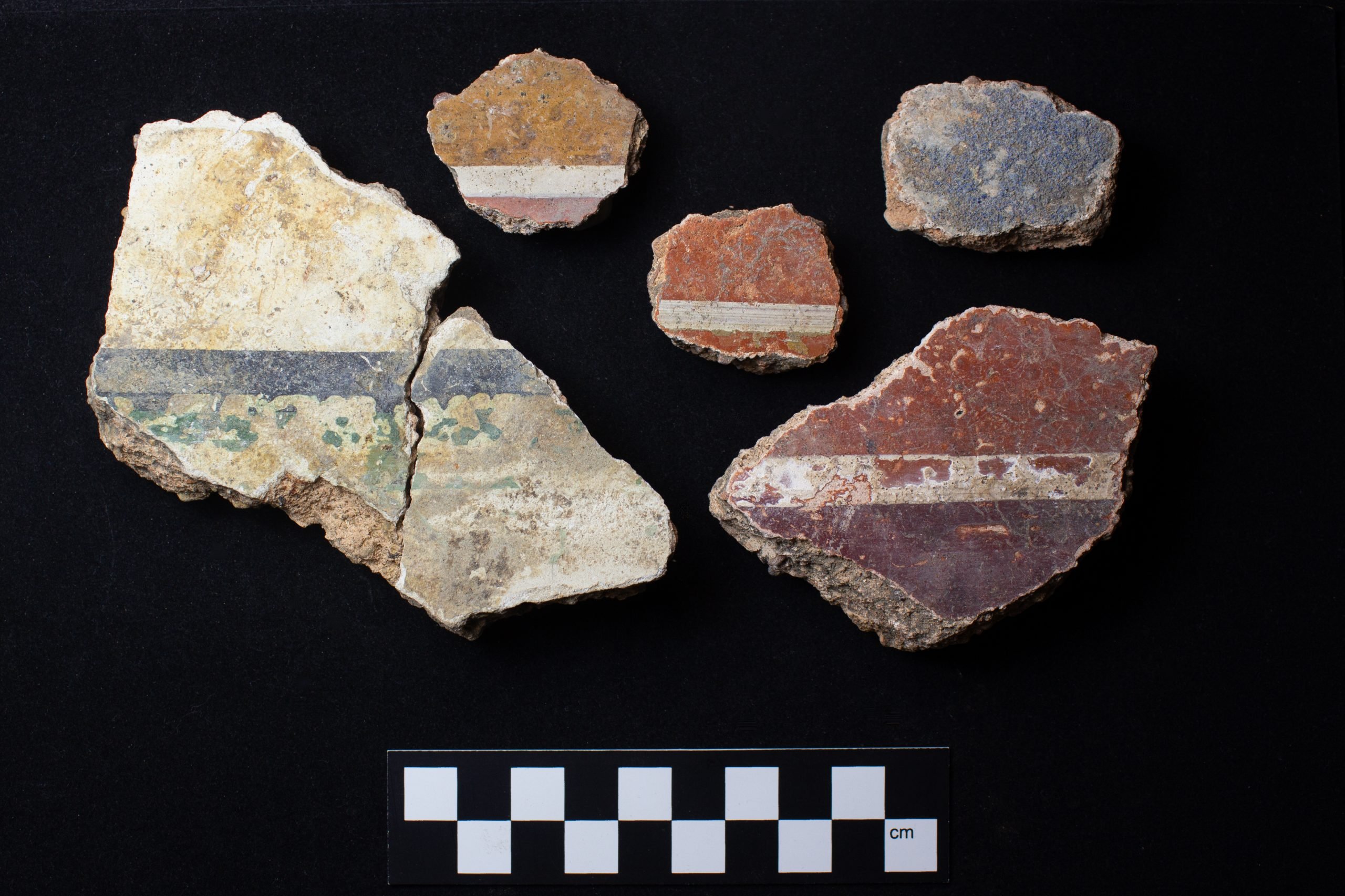
Archaeologists in the U.K. have made a groundbreaking discovery at the Brookside Meadows site in Grove, a village in Oxfordshire. Amid a housing development by Barratt and David Wilson Homes, they have uncovered a remarkable Roman villa complex, shedding light on centuries of human activity in the area.
Turned up in a landscape stretching back to the Bronze Age, the villa complex is adorned with intricate painted plaster and mosaics. Among the finds are remnants of a monumental hall-like structure, referred to as an “aisled building,” featuring hints of internal colonnades.
Roman coin selection. Photo: © Red River Archaeology Group.
The artifacts uncovered paint a vivid picture of Roman life, with items ranging from sophisticated painted plaster with floral motifs to mosaic tesserae, hypocaust box flue tiles, and a plethora of coins, rings, and brooches. A horse-headed belt buckle dating to 350–450 C.E. offer a glimpse into late Roman and early Anglo-Saxon interactions, while highlighting the historical significance of the site.
A horse-head brooch or belt buckle uncovered at Brookside Meadows. Photo: © Red River Archaeology Group.
“The sheer size of the buildings that still survive and the richness of goods recovered suggest this was a dominant feature in the locality, if not the wider landscape,” said Louis Stafford, senior project manager at Red River Archaeology Group, which oversaw the dig, in a statement.
One of the most intriguing finds at the site is a collection of tightly-coiled lead scrolls, reminiscent of Roman “curse tablets.” Curse tablets were often rolled, folded, or pierced with a nail, written by someone pleading with the gods to hex an enemy. While currently blank, these scrolls, coupled with miniature votive axes, hint at a potential ritual or pilgrimage site within the estate.
A collection of empty rolled up lead scrolls, which may have been curse scrolls. Similar scrolls have been found at Roman archaeological sites across Britain. Photo: © Red River Archaeology Group.
The complex also provides insight into Roman architectural trends, with the presence of aisled buildings and winged-corrido villas dating back to the late 1st century C.E. These structures, which were popular during the 2nd century, gradually declined in the 4th century. The ongoing excavation has revealed four massive column or post bases within the aisled building, suggesting it was one of the larger examples of its kind in Britain.
Brickwork underfloor of the Roman villa. Photo: © Red River Archaeology Group.
Francesca Giarelli, the archaeology group’s project officer, said: “The site is far more complex than a regular rural site and clearly was an important center of activities for a long time, from the Bronze Age to the later Roman period.”
The villa also housed repurposed spaces, with an oven for drying cereals and hops made of melted Roman building material. This reflects the phenomenon apparent in other grand Romano-British villa complexes, which evolved to become increasingly concerned with crop processing and manufacturing, choosing function over grand displays of wealth.
An oven designed for drying hops, cereals, and other crops was uncovered at the villa complex. Photo: © Red River Archaeology Group.
According to a media release by Red Rock Archaeology Group, the team plans to work with Barratt and David Wilson Homes to ensure that construction work on the site proceeds without endangering its heritage.
“It’s remarkable to think that we are simply the latest in a line of people who have established a community on this site, dating back such a long way,” said Campbell Gregg, managing director of the housing site.